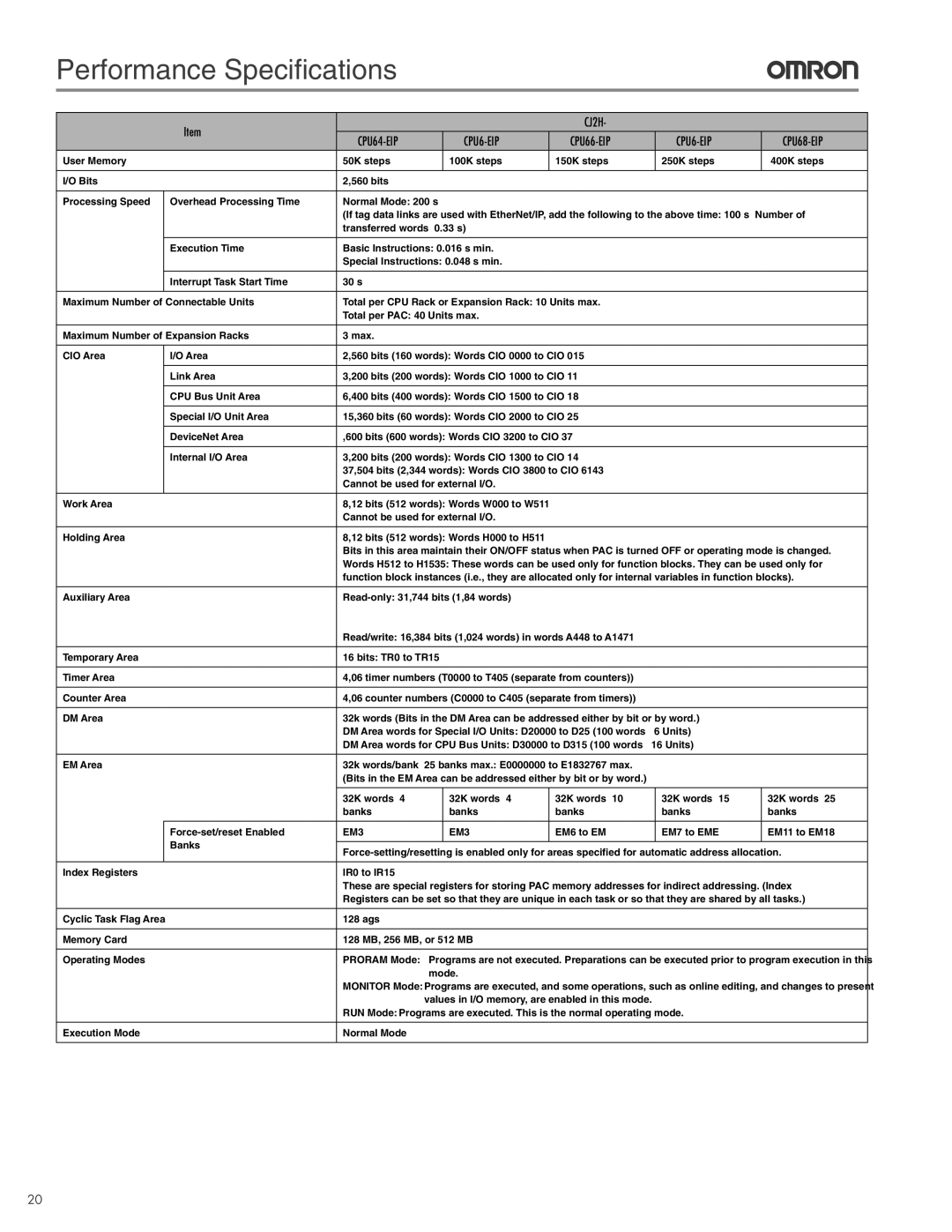CJ2 specifications
The Omron CJ2 series is a powerful and versatile family of programmable logic controllers (PLCs) that exemplify modern automation technology. Known for their robust performance and reliability, CJ2 controllers are widely used in various industries for controlling machinery, processes, and other automated systems.One of the main features of the CJ2 series is its impressive scalability. The platform offers various models, allowing users to choose the right controller based on their application needs. The CJ2 series supports up to 64 I/O modules, providing ample flexibility for expanding system capabilities. Additionally, it supports more than 4096 I/O points with the right configuration, making it suitable for small to large-scale applications.
The CJ2 series leverages Omron's advanced Kinematics technology, which enhances motion control capabilities. This feature is particularly beneficial for applications requiring precise control over moving parts, such as robotics and material handling systems. The CJ2 can manage multiple axes simultaneously, allowing for complex multi-axis systems to be programmed easily.
Another key characteristic of the CJ2 is its high-speed processing. The controller is equipped with a fast CPU that delivers quick execution of logic programs and supports high-speed data processing, making it ideal for time-critical applications. The CJ2 series also incorporates a rich instruction set that supports various programming languages, including ladder diagram, structured text, and function block diagram, catering to the preferences and needs of different programmers.
Enhanced communication capabilities are another highlight of the Omron CJ2 series. It supports various fieldbus protocols, including Ethernet/IP, Profibus, and DeviceNet, allowing for seamless integration with other devices and systems. This connectivity enables users to build complex, coordinated systems that communicate effectively in real-time.
The CJ2 series also boasts robust diagnostics features, making it easier to troubleshoot and maintain installations. The controller can store extensive diagnostic information, helping users quickly identify issues within the system. Additionally, the CJ2's user-friendly programming environment simplifies the development process, allowing for rapid deployment.
In summary, the Omron CJ2 series stands out for its scalability, advanced motion control capabilities, high-speed processing, and enhanced communication features. These characteristics make it a go-to option for engineers and manufacturers seeking a reliable and flexible PLC solution to meet their automation needs. Its combination of performance, versatility, and user-friendly design cements the CJ2's reputation as a leader in the field of industrial automation.

